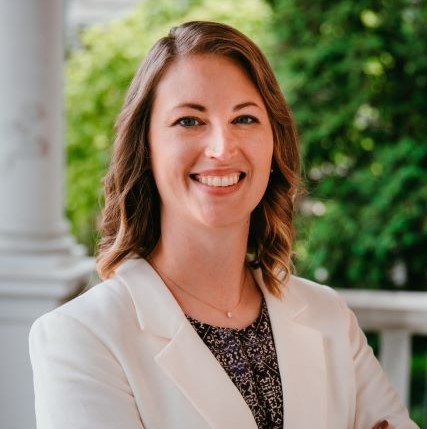5 Tech Tools to Promote Kindness in the Classroom
,
Colorado Convention Center, Bluebird Ballroom Lobby, Table 37
Presenters


Session description
Purpose & objective
- Create a kinder classroom
- Understand and brainstorm uses of 5 engaging tech tools to help build kindness in the classroom
- Tech tools: Along.org, FigJam, Canva, Parlay, Google Keep
- Practice using those tech tools
- Collaborate and network with other participants
Outline
- 5-minute introduction/opener
- Research on why kindness in the classroom is crucial (5 minutes)
- Share and demonstrate each of the 5 tools & allow participants to collaborate and try them out (5 minutes each)
- Closer (5 minutes)
Supporting research
Bergin, Christi. (2018). Designing a prosocial classroom: Fostering collaboration in students from preK-12 with the curriculum you already use. W.W. Norton & Company.Blad, E. (2018, September 5).
Blad, E. (2018, September 5). 1 in 7 Students Found to Be “Chronically Absent,” Report Finds. Education Week. https://www.edweek.org/leadership/1-in-7-students-found-to-be-chronically-absent-report-finds/2018/09
Blad, E. (2022, April 8). Chronic Absenteeism Spiked During COVID. Here’s What Schools Can Do About It. Education Week. https://www.edweek.org/leadership/chronic-absenteeism-spiked-during-covid-heres-what-schools-can-do-about-it/2022/04
Brophy, J. (1981). Teacher Praise: A Functional Analysis Author(s): Jere Brophy Published by: American Educational Research Association Stable URL: https://www.jstor.org/stable/1170249 Teacher Praise: A Functional Analysis. 51(1), 5–32.
Desmon, S. (2021, February 17). “Social norms are the unwritten rules:” A Q&A with Lisa Cobb. Johns Hopkins Center for Communication Programs; Johns Hopkins. https://ccp.jhu.edu/2021/02/17/social-norms-behavior-change/
Ferlazzo, L. (2022, February 2). The past and future of education research. Education Week. https://www.edweek.org/teaching-learning/opinion-the-past-and-future-of-education-research/2022/02
Foster, J. (2021, November 30). The power of praise [Google Slides].
Freeman, S., Eddy, S. L., McDonough, M., Smith, M. K., Okoroafor, N., Jordt, H., & Wenderoth, M. P. (2014). Active learning increases student performance in science, engineering, and mathematics. Proceedings of the National Academy of Sciences, 111(23), 8410–8415.
Getting started with establishing ground rules. (2022). Center for Teaching Innovation; Cornell University. https://teaching.cornell.edu/resource/getting-started-establishing-ground-rules
Jotkoff, E. (2022, February 1). NEA survey: Massive staff shortages in schools leading to educator burnout; alarming number of educators indicating they plan to leave profession | NEA. Www.nea.org. https://www.nea.org/about-nea/media-center/press-releases/nea-survey-massive-staff-shortages-schools-leading-educator
Learning student names. (2021). Poorvucenter.yale.edu; Poorvu Center for Teaching and Learning. https://poorvucenter.yale.edu/LearningStudentNames
Leckie, R. M. (2020, December 10). Use Active Learning. Introductory Courses; Teach the Earth. https://serc.carleton.edu/NAGTWorkshops/intro/activelearning.html
Li, P. (2021). Inductive Discipline - Why it is the Best. Parenting for Brain. Retrieved 15 November 2021, from https://www.parentingforbrain.com/inductive-discipline/
Li, X., Bergin, C., & Olsen, A. A. (2022). Positive teacher-student relationships may lead to better teaching. Learning and Instruction, 80, 101581. Science Direct. https://doi.org/10.1016/j.learninstruc.2022.101581
Morin, A. (2021, April 6). The power of effective praise: A guide for teachers. Understood. Retrieved October 7, 2021, from https://www.understood.org/articles/en/the-power-of-effective-praise-a-guide-for-teachers.
Paul Caldarella, Ross A. A. Larsen, Leslie Williams, Kade R. Downs, Howard P. Wills & Joseph H. Wehby (2020). Effects of teachers’ praise-to-reprimand ratios on elementary students’ on-task behaviour, Educational Psychology, 40:10, 1306-1322, DOI: 10.1080/01443410.2020.1711872
Ruell, P. (2019, September 4). Study shows that students learn more when taking part in classrooms that employ active-learning strategies. Harvard Gazette; Harvard Gazette. https://news.harvard.edu/gazette/story/2019/09/study-shows-that-students-learn-more-when-taking-part-in-classrooms-that-employ-active-learning-strategies/
Robertson, Glenda. (2018, August 28). The case for designing active learning activities to enhance information recall. Online Design and Development Blog; University of Colorado. https://www.cu.edu/blog/online-teaching-blog/case-designing-active-learning-activities-enhance-information-recall
Schwartz, N., & Caldwell, D. (2022, October 17). 5 ways to get students involved as a community of learners [In-person]. MOREnet.
Strauss, V. (2020, April 22). How relationships between teachers and students are being tested in covid-19 crisis. Washington Post; The Washington Post. https://www.washingtonpost.com/education/2020/04/22/how-relationships-between-teachers-students-are-being-tested-covid-19-crisis/
Tackie, H. N. (2022). (Dis)Connected: Establishing social presence and intimacy in teacher–student relationships during emergency remote learning. AERA Open, 8, 233285842110695. Sage Journals. https://doi.org/10.1177/23328584211069525
Theobald, E. J., Hill, M. J., Tran, E., Agrawal, S., Arroyo, E. N., Behling, S., Chambwe, N., Cintrón, D. L., Cooper, J. D., Dunster, G., Grummer, J. A., Hennessey, K., Hsiao, J., Iranon, N., Jones, L., Jordt, H., Keller, M., Lacey, M. E., Littlefield, C. E., … Freeman, S. (2020). Active learning narrows achievement gaps for underrepresented students in undergraduate science, technology, engineering, and math. Proceedings of the National Academy of Sciences, 117(12), 6476–6483.
Tips for learning students’ names. (2022). Www.cmu.edu; Eberly Center - Carnegie Mellon University. https://www.cmu.edu/teaching/solveproblem/strat-cheating/tips-studentnames.html
Session specifications
Laptop: Chromebook, Mac, PC
Tablet: Android, iOS, Windows
Leader
- Advocate for equitable access to educational technology, digital content and learning opportunities to meet the diverse needs of all students.
- Create experiences for learners to make positive, socially responsible contributions and exhibit empathetic behavior online that build relationships and community.
- Use technology to create, adapt and personalize learning experiences that foster independent learning and accommodate learner differences and needs.
 Return
Return Participate and share: Poster
Participate and share: Poster  Trips and Tours
Trips and Tours